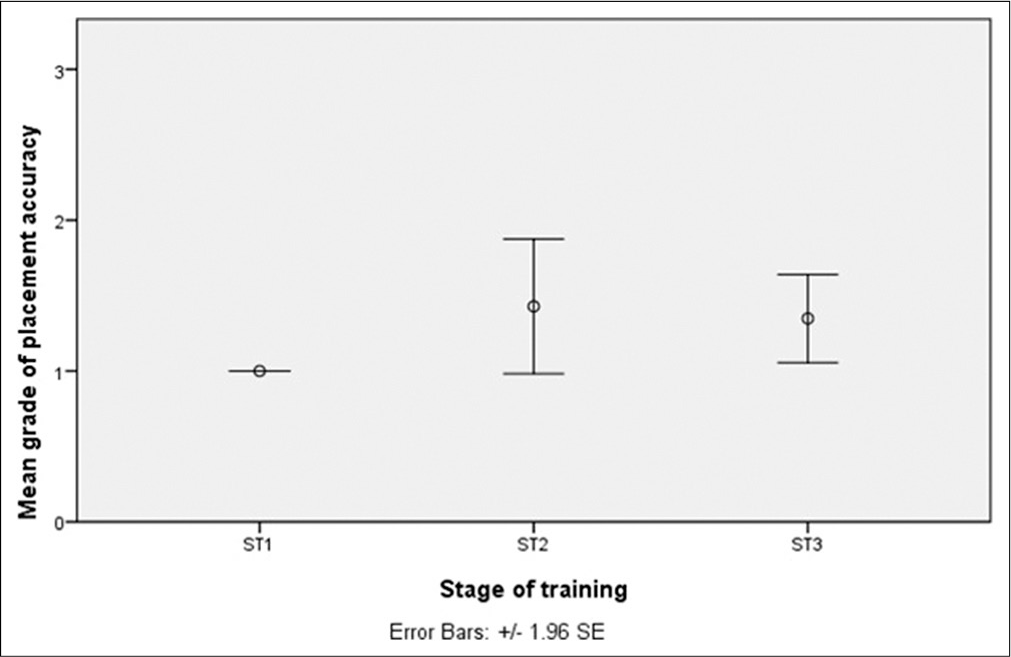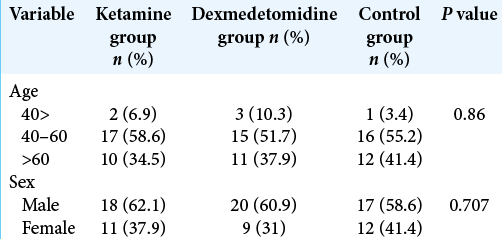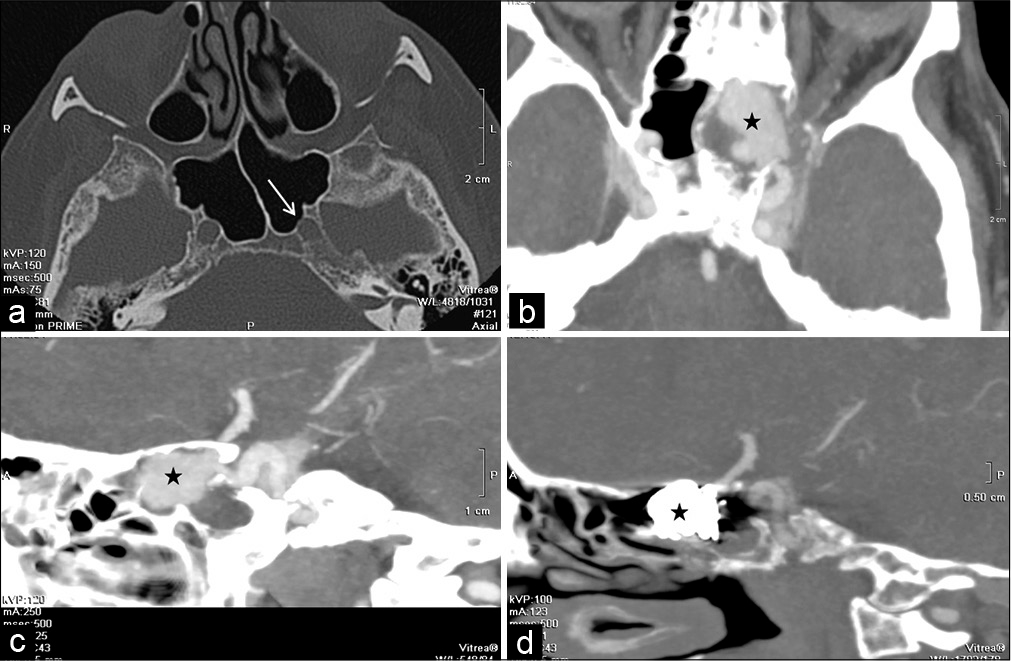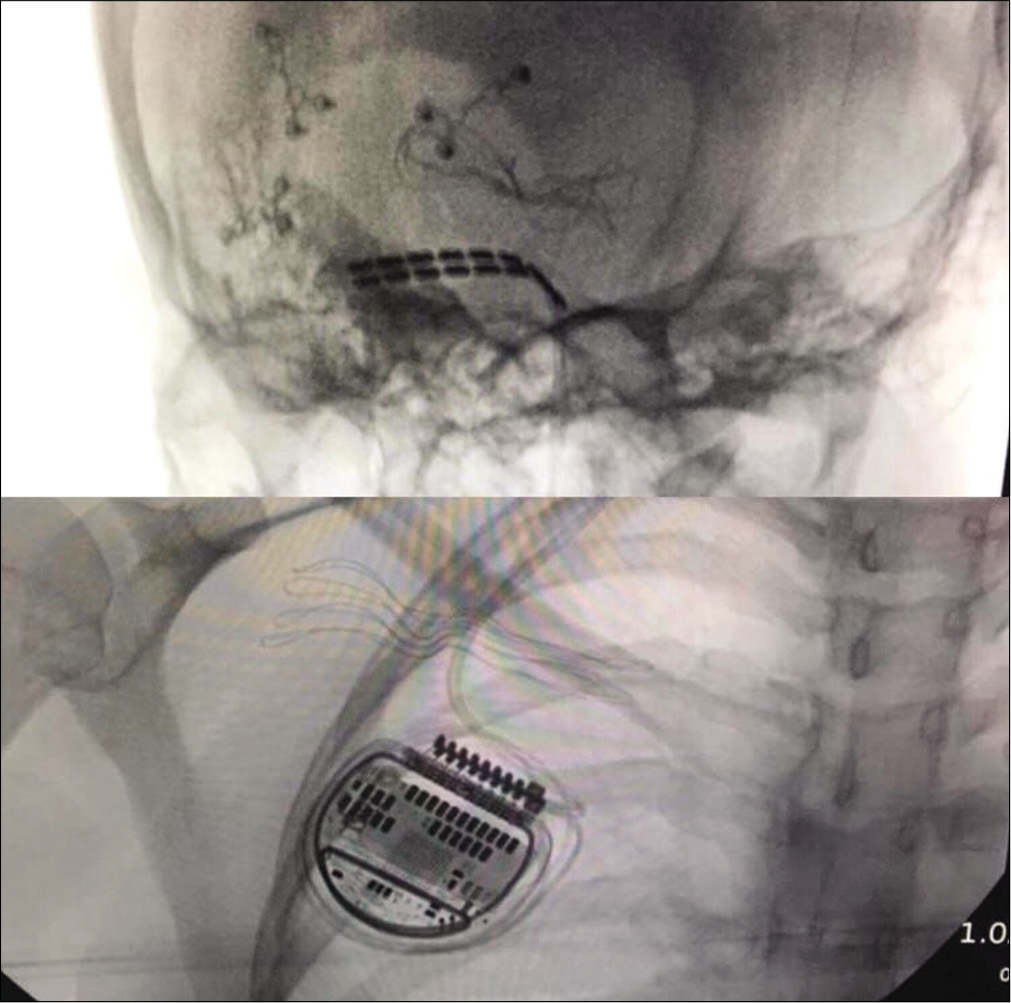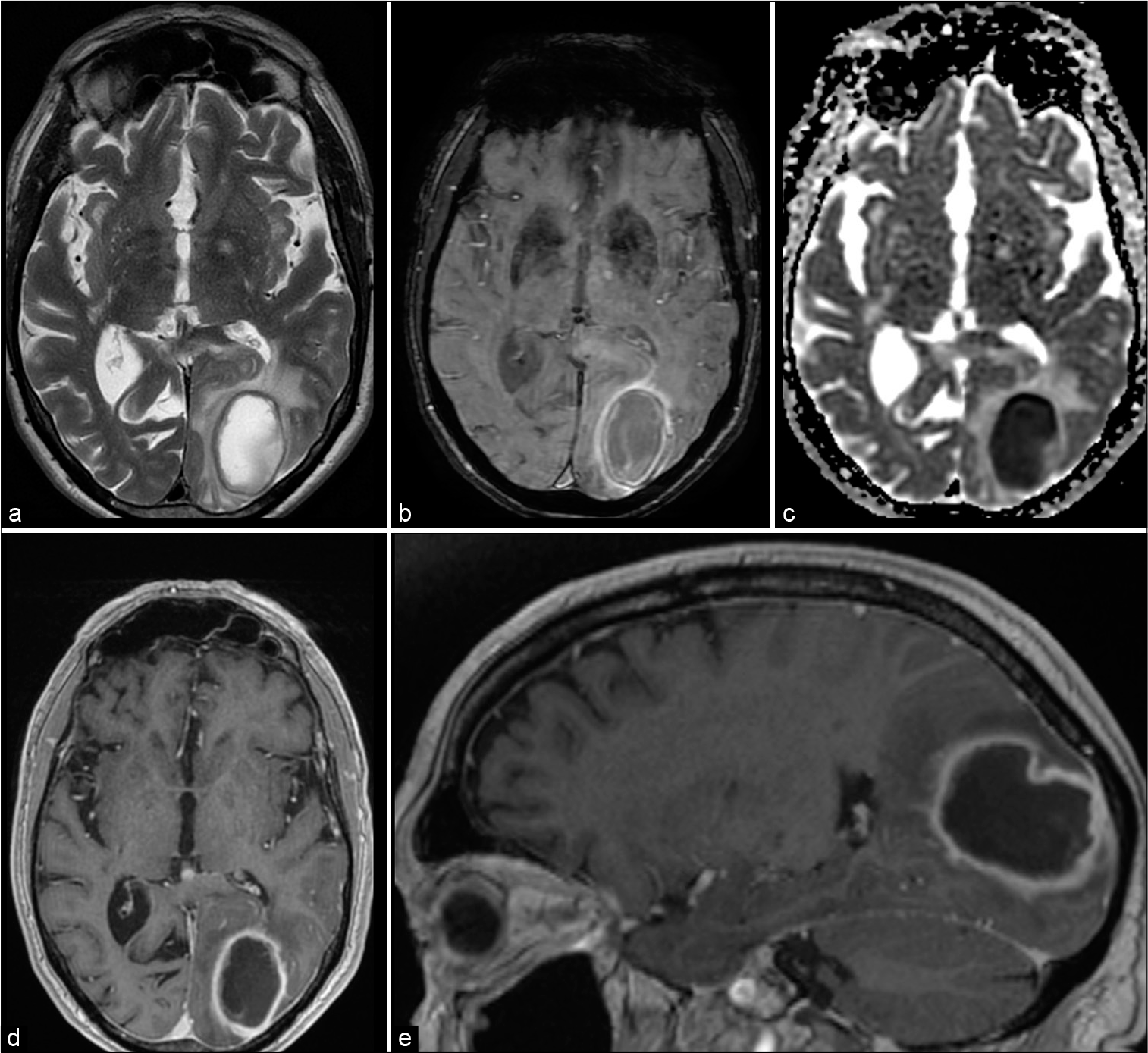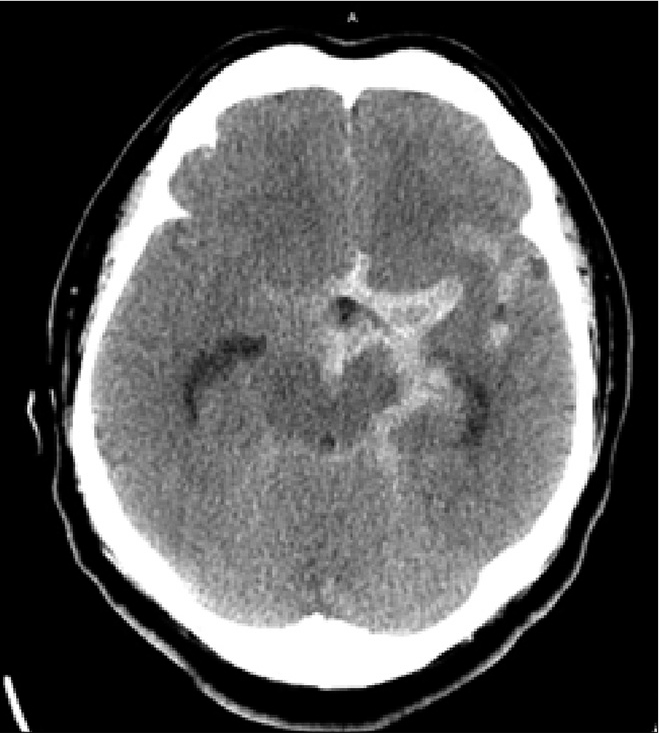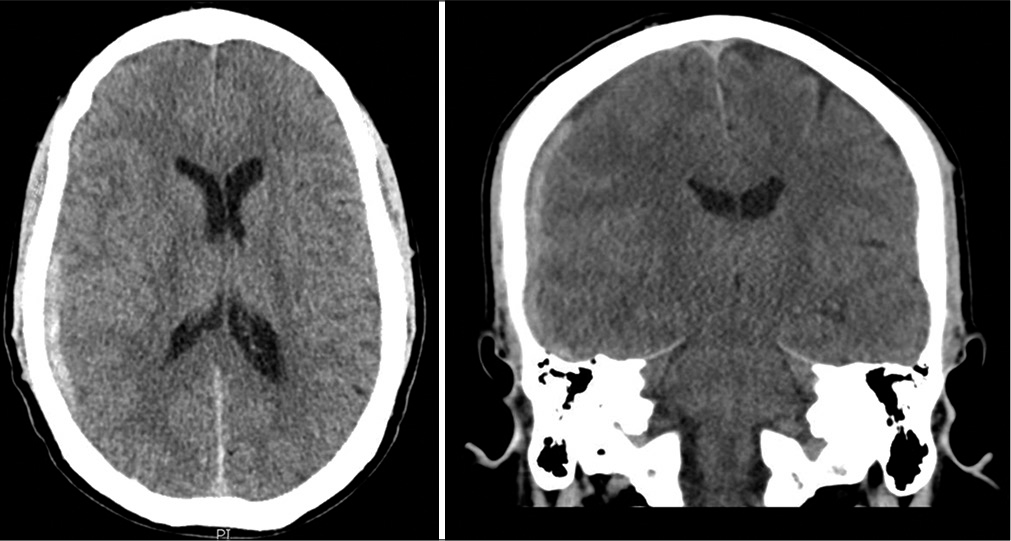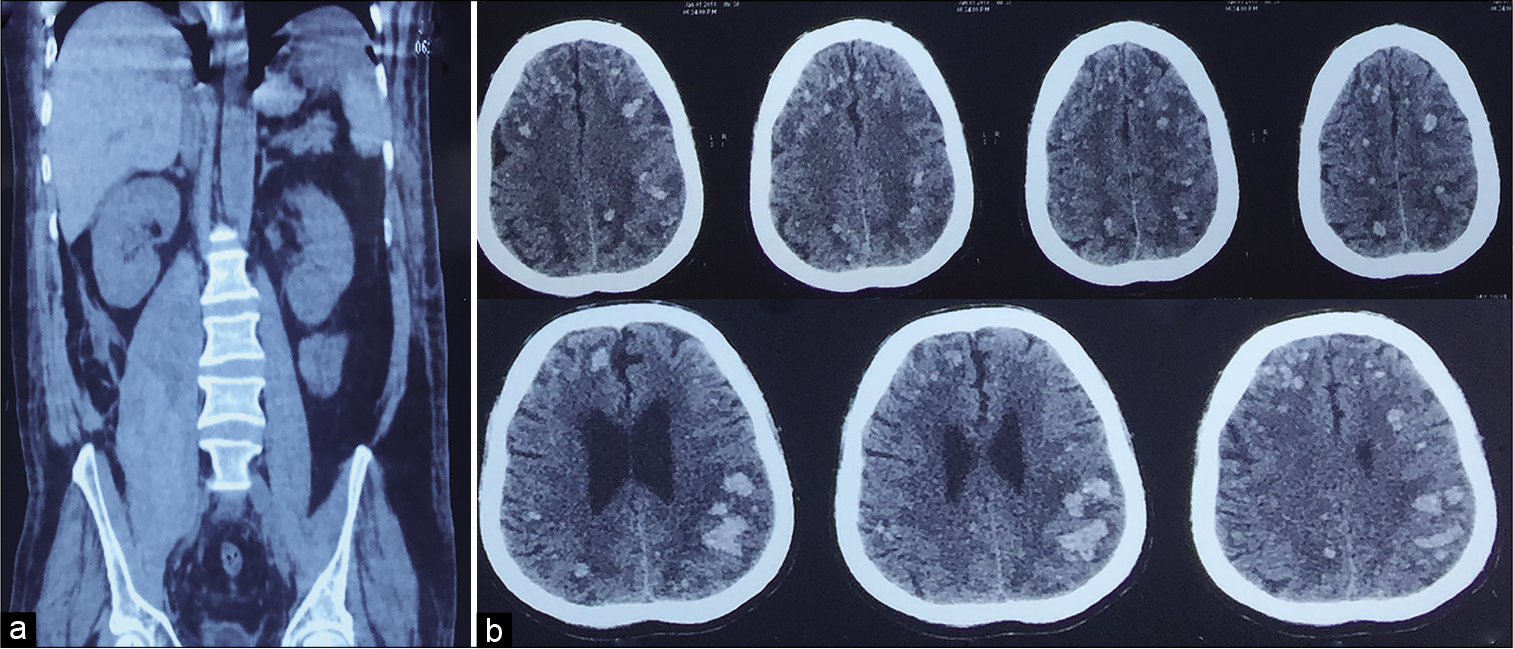Freehand external ventricular drain insertion – is there a learning curve?
Date of publication: 26-Apr-2021
Background: Accuracy of freehand insertion of external ventricular drains (EVDs) is influenced by many factors including etiology and presence of midline shift. We sought to assess if junior neurosurgical trainees’ performance in accurately inserting EVDs improves with experience, using a radiological grading system.
Effects of ketamine versus dexmedetomidine maintenance infusion in posterior spinal fusion surgery on acute postoperative pain
Date of publication: 26-Apr-2021
Background: One of the most challenging issues after posterior spinal fusion (PSF) surgery is providing appropriate pain control measures to enhance recovery of the patients. We aimed to compare effects of ketamine versus dexmedetomidine infusion during maintenance of anesthesia on acute postoperative pain in PSF surgery.
Ruptured infectious ICA pseudoaneurysm into the sphenoid sinus after maxillofacial infection, successfully treated by selective embolization
Date of publication: 26-Apr-2021
Background: Intracranial infectious aneurysms are cerebral aneurysms caused by pathogen-induced inflammation undermining the arterial wall. We present a rare case of inflammatory pseudoaneurysm of cavernous internal carotid artery (ICA).
Somatosensory evoked potentials and Hirayama disease
Date of publication: 26-Apr-2021
An unusual case of lead migration in occipital nerve stimulation: A case report and literature review
Date of publication: 26-Apr-2021
Background: Lead migration is a complication associated with occipital nerve stimulation (ONS). We present a rare case in which fibrosis in the stress relief loop caused lead migration in the treatment of occipital neuralgia.
Screening in cryptogenic brain abscess: Do not forget pulmonary arteriovenous malformations
Date of publication: 26-Apr-2021
Background: Brain abscess usually occurs secondary to trauma, through contiguous spread (e.g.; dental infections, [paranasal] sinusitis, otitis, and mastoiditis), after intracranial neurosurgical procedures, or through hematogenous spread in case of an arteriovenous (AV) shunt, for example; atrial septum defect. Although uncommon, another possible cause of AV shunt which can facilitate brain abscess is a pulmonary arteriovenous malformation (PAVM). We report a case of brain abscess secondary to a solitary PAVM and review the literature.
Ruptured cerebral aneurysms in COVID-19 patients: A review of literature with case examples
Date of publication: 26-Apr-2021
Background: The novel severe acute respiratory syndrome coronavirus 2 is responsible for over 83 million cases of infection and over 1.8 million deaths since the emergence of the COVID-19 pandemic. Because COVID-19 infection is associated with a devastating mortality rate and myriad complications, it is critical that clinicians better understand its pathophysiology to develop effective treatment. Cumulative evidence is suggestive of cerebral aneurysms being intertwined with the hyperinflammatory state and hypercytokinemia observed in severe COVID-19 infections.
Acute nontraumatic subdural hematoma from ruptured accessory meningeal artery pseudoaneurysm
Date of publication: 26-Apr-2021
Background: Cerebral angiography including internal and external carotid artery injections is crucial in young patients with a spontaneous subdural hematoma.
Multiple cerebral hemorrhages in sepsis-disseminated intravascular coagulation versus septic embolism: An image report
Date of publication: 26-Apr-2021
Background: Septic emboli are commonly attributed to infective endocarditis and can present with a variety of symptoms including altered mental status and focal neurological deficits. Here, we reviewed images of septic emboli with hemorrhagic conversion in a patient with sepsis and a psoas abscess. We aim to show the classical image findings in septic embolism to brain, which is sparsely described in literature and the report differentiates the septic embolism from disseminated intravascular coagulation which can present with almost identical image findings.
A novel checklist for anesthesia in neurosurgical cases
Date of publication: 26-Apr-2021
Abstract
Throughout their training, anesthesiology residents are exposed to a variety of surgical subspecialties, many of which have specific anesthetic considerations. According to the Accreditation Council for Graduate Medical Education requirements, each anesthesiology resident must provide anesthesia for at least twenty intracerebral cases. There are several studies that demonstrate that checklists may reduce deficiencies in pre-induction room setup. We are introducing a novel checklist for neuroanesthesia, which we believe to be helpful for residents during their neuroanesthesiology rotations. Our checklist provides a quick and succinct review of neuroanesthetic challenges prior to case setup by junior residents, covering noteworthy aspects of equipment setup, airway management, induction period, intraoperative concerns, and postoperative considerations. We recommend displaying this checklist on the operating room wall for quick reference.


